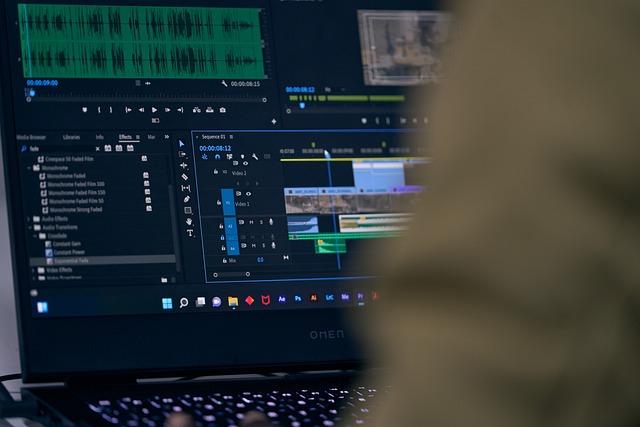In the world of filmmaking, where every frame tells a story, the rhythm of editing plays a crucial role in shaping the viewer’s emotional journey. Fast-paced editing, with its rapid cuts and brisk transitions, is often employed to energize scenes and keep audiences on the edge of their seats. But amidst the flurry of visuals, a question emerges: does this quick-fire technique dilute the emotional depth of a scene? As we delve into the intricate dance between speed and sentiment, we explore whether the art of editing can truly capture the heart of a story or if, in its haste, it leaves emotions behind. Join us as we unravel the impact of editing tempo on cinematic storytelling.
Crafting Emotional Resonance: The Role of Editing Speed
In the intricate dance of filmmaking, editing speed plays a pivotal role in shaping the audience’s emotional journey. Fast-paced editing can electrify a scene, infusing it with urgency and intensity. However, it risks diminishing the emotional depth if not balanced carefully. Quick cuts can overwhelm, leaving little room for the viewer to fully absorb the emotional nuances of a moment. Consider these aspects when evaluating the impact:
- Emotional Breathing Room: Slower edits allow characters’ emotions to linger, providing audiences the time to connect and empathize.
- Storytelling Clarity: Rapid transitions may sacrifice clarity, potentially confusing viewers and weakening emotional engagement.
- Rhythm and Pacing: Varied editing speeds can create a dynamic rhythm, maintaining engagement while preserving key emotional beats.
Ultimately, the art lies in finding the right balance, ensuring that the editing speed enhances rather than detracts from the emotional impact of each scene.

The Psychology of Pacing: How Fast Cuts Influence Viewer Perception
The rhythm of film editing can subtly guide a viewer’s emotional journey. Fast cuts, characterized by rapid transitions between shots, can inject energy and urgency into a scene. However, they might also dilute the emotional depth by not allowing the audience enough time to fully absorb the emotional cues. The psychology behind this lies in cognitive processing: when edits happen too swiftly, the brain prioritizes processing the visual information over emotional engagement.
Consider the following impacts of fast-paced editing on viewer perception:
- Increased Tension: Quick cuts can heighten anxiety and create a sense of chaos, often used effectively in action sequences.
- Reduced Empathy: By moving rapidly from one shot to another, viewers may struggle to connect deeply with characters’ emotions.
- Enhanced Focus: Fast pacing can direct attention to specific details, but might overshadow subtler emotional undercurrents.
While fast-paced editing can invigorate a narrative, striking a balance is key to maintaining emotional resonance.

Balancing Speed and Sentiment: Techniques for Maintaining Emotional Depth
In the realm of fast-paced editing, maintaining emotional depth requires a delicate balance between rapid scene transitions and the retention of emotional resonance. Editors can employ a variety of techniques to achieve this equilibrium. Strategic pacing is essential; while quick cuts can enhance tension and energy, it’s crucial to intersperse these with moments of stillness where the audience can process emotions. This contrast allows viewers to connect with characters on a deeper level without feeling overwhelmed.
- Sound design: Utilize music and sound effects to evoke emotions quickly, complementing the visual tempo.
- Selective focus: Use close-ups strategically to highlight emotional expressions, ensuring viewers don’t miss key emotional cues.
- Dialogue pacing: Craft dialogue that conveys emotional weight succinctly, allowing it to resonate even within a rapid sequence.
By integrating these techniques, editors can ensure that the narrative maintains its emotional core, even amidst the swiftest of edits.

Recommendations for Editors: Striking the Right Emotional Chord
Editors seeking to enhance the emotional resonance of a scene should consider the pace of their cuts. A slower pace can often allow viewers to fully absorb the nuances of a performance, fostering a deeper connection with the characters and their journey. Here are some strategies to strike the right balance:
- Embrace Silence: Allow moments of quiet to linger, giving the audience time to reflect and feel the gravity of a scene.
- Highlight Key Expressions: Focus on actors’ subtle facial cues, which can convey complex emotions more effectively than dialogue.
- Vary the Rhythm: Use a mix of fast and slow cuts to maintain engagement while also providing emotional depth.
By thoughtfully adjusting the editing tempo, editors can craft scenes that resonate more profoundly with viewers, creating an impactful narrative experience.

